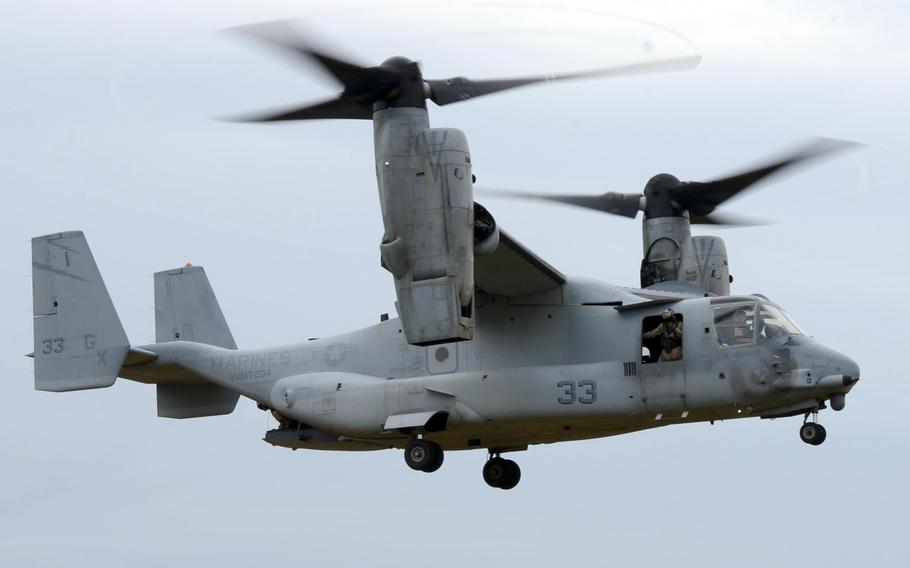Asia-Pacific
US plans more Osprey training flights in mainland Japan
Stars and Stripes July 17, 2014

An MV-22 Osprey. (Paris Capers/USMC)
YOKOTA AIR BASE, Japan — Marine Corps Ospreys will be making more flights over mainland Japan as the U.S. military tries to reduce training hours on Okinawa, where residents have protested the hybrid aircraft since before its arrival in 2012.
The Japanese government is in the process of building facilities at U.S. bases on the mainland so that “the majority of the training by the aircraft can be carried out outside Okinawa,” according to comments made by Japanese Defense Minister Itsunori Onodera that were posted on the ministry’s website.
The 2012 arrival of the MV-22 Ospreys at Marine Corps Air Station Futenma was met with fierce opposition by many people in Okinawa who were fearful that the aircraft had a less than stellar safety record. At the time, the U.S. military put on a public relations blitz to assuage those fears, and there have been no major incidents regarding the Osprey since its arrival.
Its service on mainland Japan, however, has been limited.
But on Tuesday, Ospreys — which take off like helicopters, then tilt their rotors to fly like fixed-wing aircraft — refueled at Naval Air Station Atsugi, near Tokyo, before dropping off personnel at Camp Fuji, a Marine base in Shizuoka Prefecture, officials said.
Additionally, two Ospreys are scheduled to refuel at Yokota Air Base on Saturday en route to the July 20 Sapporo Air Show, according to 374th Airlift Wing spokesman 1st Lt. Jacob Bailey.
The Ospreys’ participation in the Sapporo Air Show is aimed at raising public awareness of the aircraft, according to 1st Lt. Noah Rappahahn, 3rd Marine Expeditionary Force spokesman.
“We are trying to get as much visibility of the aircraft as we can, and airshows are a great opportunity to let people talk to pilots and go see the aircraft,” he said.
The Ospreys are authorized to operate at all U.S. bases in Japan under the Japan-U.S. Security Treaty. The mainland flights follow designated routes that are already used by other Japanese and U.S. military aircraft, , Rappahahn said.
Commanding general of the 1st Marine Aircraft Wing, Brig. Gen. Steve R. Rudder, wrote in a commentary submitted this week to Stars and Stripes that the Ospreys had been used in training on mainland Japan, South Korea, the Philippines, Singapore, Thailand, Australia and Guam for more than a year.
“This reduces the amount of time the Ospreys spend in Okinawa,” he said.
However, some Japanese are still concerned about the safety of the aircraft. Local media reported that rallies at Atsugi and Camp Fuji protested against the flights there, and Yokota officials have warned of possible protests outside the base in connection with this weekend’s flights.
Onodera said he was aware of the lingering safety concerns.
“We will continue to promptly inform local communities involved of flight schedules as soon as we obtain the information from U.S. military,” he said.
Stars and Stripes staffer Chiyomi Sumida contributed to this report.
robson.seth@stripes.com Twitter: @SethRobson1